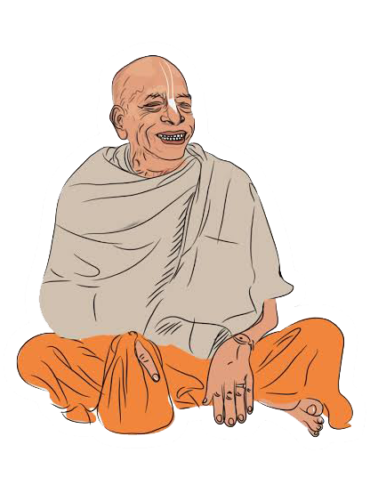‘Sampradaya’ implies disciplic succession. The Vedic spiritual knowledge we receive must come down through the bonafide Sampradaya. Else, the knowledge is not authorized and can create havoc in society.
In Shloka 2, Chapter 4 of Srimad Bhagavad Gita, Lord Krishna tells Arjuna the importance of following a bonafide sampradaya:
In Shloka 2, Chapter 4 of Srimad Bhagavad Gita, Lord Krishna tells Arjuna the importance of following a bonafide sampradaya:
evaḿ paramparā-prāptam
imaḿ rājarṣayo viduḥ
sa kāleneha mahatā
yogo naṣṭaḥ parantapa
“This supreme science was thus received through the chain of disciplic succession, and the saintly kings understood it in that way. But in course of time the succession was broken, and therefore the science as it is appears to be lost”
Thus, in the shloka above, we can see the importance of receiving spiritual knowledge in the disciplic succession. Even in the material world, we must learn or get knowledge from authorized sources.
An example can be given of engineering education. A student who wishes to study engineering has to approach an institution authorized by an established university and a technical education committee established by law. If the student doesn’t follow this process, he/she could be duped.
Thus, in the shloka above, we can see the importance of receiving spiritual knowledge in the disciplic succession. Even in the material world, we must learn or get knowledge from authorized sources.
An example can be given of engineering education. A student who wishes to study engineering has to approach an institution authorized by an established university and a technical education committee established by law. If the student doesn’t follow this process, he/she could be duped.
There are four main sampradayas on earth through which one can receive Vedic spiritual knowledge. These four sampradayas are -
Brahma Sampradaya
This sampradaya is also called Brahma-Madhwa-Gaudiya sampradaya. It begins from Lord Brahma, the secondary creator of this universe, who received knowledge directly from Lord Krishna Himself. It includes great acharyas like Narada Muni, Vyasadeva, Madhwacharya, Madhavendra Puri, Chaitanya Mahaprabhu right up to our very dear spiritual master HDG A.C. Bhaktivedanta Swami Prabhupada. The sampradaya is also called as Madhwa sampradaya due to the strong influence of Srila Madhwacharya. He is an incarnation of Bhakta Hanuman who wrote powerful commentaries on the brahma-sutras. When Sri Chaitanya Mahaprabhu, who was Lord Krishna in a devotee form, appeared in the sampradaya, it began to be referred to as the Madhwa-Gaudiya sampradaya too.
Sri Sampradaya
This sampradaya begins from Lakshmi Devi, the eternal consort of Lord Vishnu. Due to Sri Ramanujacharya’s strong influence, it is also referred to as the Ramanuja sampradaya. Ramanuja-bhashya is his most prominent work. Sri Ramanandacharya is another prominent acharya here. This sampradaya focuses on elaborate deity worship.
Rudra sampradaya
This sampradaya begins from Lord Shiva himself, who is described as the greatest Vaishnava in the scriptures. It is said “vaishnavanam yatha shambho”. Sri Vishnuswami is the prominent acharya here and hence, the sampradaya came to be also known as Vishnuswami sampradaya. Sri Vallabhacharya is another prominent acharya here whose disciplic succession came to be known as the Vallabha sampradaya. He wrote the famous commentary called Anubhashya.
Kumara sampradaya
This sampradaya begins from the four Kumaras headed by Sanaka Kumara , who are great devotees of Lord Krishna. Sri Nimbaditya is the prominent acharya here and hence, the sampradaya is also known by the name Nimbarka sampradaya .
You would have got a fair understanding of the four bonafide sampradayas from the above description. Our revered Spiritual Master and the Worldwide Founder of the Hare Krishna Movement His Divine Grace Abhaya Charanaravinda Bhaktivedanta Swami Prabhupada, comes in the disciplic succession beginning from Lord Brahma. All the acharyas coming down in the disciplic succession of Lord Brahma are as follows:


